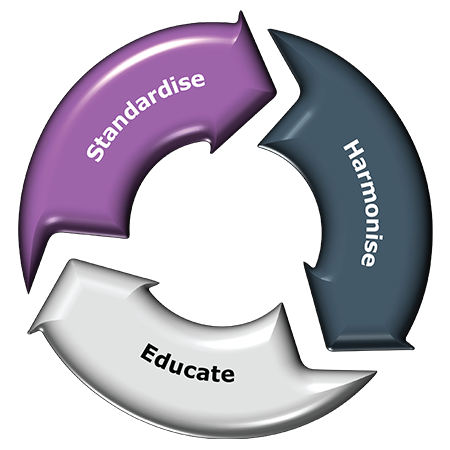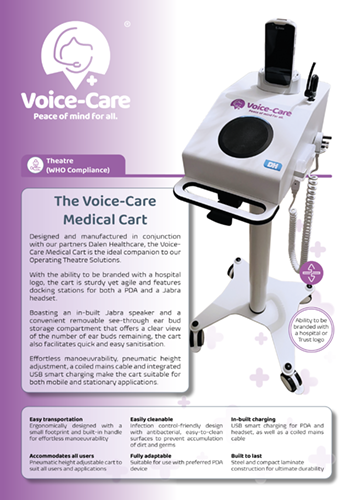Voice-Care In Partnership With:

This site uses cookies that need consent.
The Voice-Care Surgical Workflow enables the verbal recording of the WHO Surgical Safety Checklist before, during and at the end of a procedure, enabling easier and faster compliance for clinicians, whilst vastly increasing positive patient outcomes.
The World Health Organisation (WHO) Surgical Safety Checklist was mandated for use in January 2009, and is now in standard use across the UK and worldwide. It has helped to reduce surgical complications by a third since its inception within the facilities in which it is used.
|
With audit processes still being a requirement, as is commonplace with all safety streams in highrisk industries, in-depth discussions with leading surgical clinicians and Heads of Governance and ICUs within a major London-based Trust uncovered several checklist issues:
The checklist was often underutilised and viewed as ‘just another tick-box exercise’.
There was a general unawareness of its purpose and content and some clinicians stated that they were unsure whether any or what kind of documentation was occurring.
The checklist is largely dependent on clinicians filling out patient data on paper forms, often several hours after a procedure has taken place.
Hand-written patient data was frequently inadequate, incorrect and/or illegible.
The variations in how patient data notes were written often led to notes being misread or misinterpreted.
The storage of notes was also an issue, with checklists being recorded and stored in a number of different places, making ascertaining their location difficult and time-consuming.
Dr Sadie Syed, Head of Specialty for Vascular Surgery and Services,
Imperial College Healthcare NHS Trust (ICHT)
Fully automated, digitally transformative voice-guided workflows
Ensures 100% WHO Surgical Safety Checklist compliance
Checklist standardisation & ease of adoption for all clinicians & workflows
All notes are instantly recorded and uploaded directly to the patient record
Removes the need for person evaluation in the governance process
Addresses human factor issues surrounding a complex invasive procedure
Ensures the surgical team stops & adheres to the sign in / time out procedure
Provides real-time evidentiary documentation, e.g. images / videos
Helps to avoid potential litigation risks
Enables automated data analysis for audit purposes
Enables access to accurate, real-time incident information
Saves on time & manpower. and reduces your carbon footprint

Enables clinicians to perform a pre-planned, standardised workflow
Enforces standardisation of entry via the options presented
Directs order of actions & results
Collects & stores data in a standard way
Brings standardisation to differing workflow interpretations
Manages the briefing of the user about what is expected
Records sign in, procedure start & end time in real time
Allows comparisons between procedures performed by different users regardless of location
Guides workers through the process
Uses subject matter to create workflows
Schedules and documents
Designed and manufactured in conjunction with our partners Dalen Healthcare, the Voice-Care Medical Cart is the ideal companion to our Operating Theatre Solutions.
With the ability to be branded with a hospital logo, the cart is sturdy yet agile and features docking stations for both a PDA and a Jabra headset.
Boasting an in-built Jabra speaker and a convenient removable see-through ear bud storage compartment that offers a clear view of the number of ear buds remaining, the cart also facilitates quick and easy sanitisation.
Effortless manoeuvrability, pneumatic height adjustment, a coiled mains cable and integrated USB smart charging make the cart suitable for both mobile and stationary applications.


(By completing the form above, you are giving us permission to contact you using the information provided. For more details, please read our Privacy & Cookies information.)